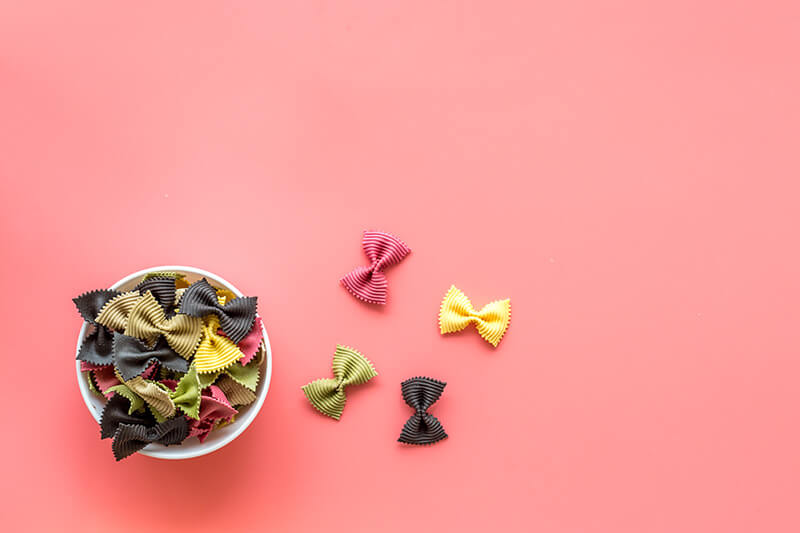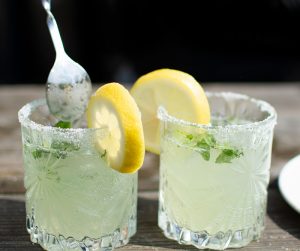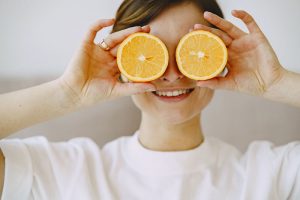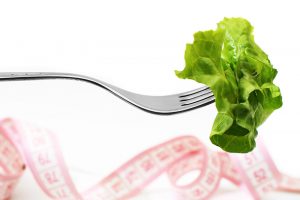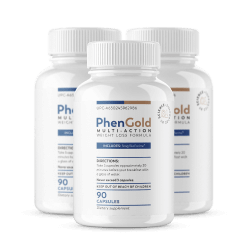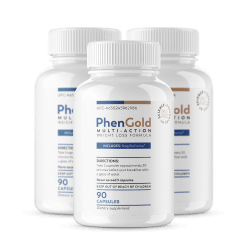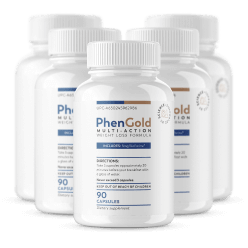It feels like forever ago now that the makers of M&Ms decided to add a new color to its chocolate sweets. Yep – blue. But why blue? Their apparent reasoning was that it was voted for by M&M fans. Nonetheless, it’s interesting to see how colors can change your appetite and eating habits.
But why is blue so unappetizing? Of all the colors in the spectrum, blue is considered an appetite suppressant. When you think about it, it makes total sense – how many blue foods do you know about?
So much so, that weight loss programs suggest putting your food on a blue plate. Or why not go a step further and put a blue light in your refrigerator. Those snacks won’t look so appetising any more! If you’re really looking to test the theory, dye your food blue.
If you want to create your own Smurf-style food, natural food coloring should do it.
Why is blue a color that suppresses your appetite?
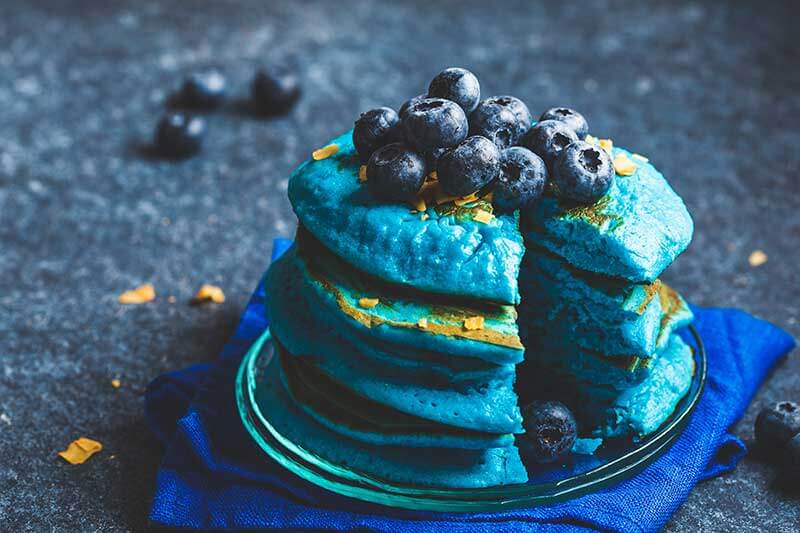
How often do you see blue food – really? It’s a pretty rare occurrence in nature. We don’t see the blue equivalent of leafy greens, nor is there any blue meat around. And no, your blue burger doesn’t quite count!
Taking blueberries out of the equation and ignoring the odd blue-purple potato (from some remote location in the world), there’s quite simply no naturally blue foods on the menu.
Naturally, our appetites don’t respond to the color blue. In fact, our primal instinct is to avoid such foods due to their poisonous nature. Way back when, some million years ago, blue, purple and black were considered “color warning signs” of foods that could potentially be lethal.
The pros in the know tell us that color and the appeal of particular foods are closely linked. Our minds are excited by the sight of fire, firing up neurons in the hypothalamus. When we are unable to see what we’re about to eat, we can’t enjoy it before even consuming it. Don’t believe me? Try eating a dish in the dark!
But what does that all mean? Well, in the marketplace today, food needs to pass the visual taste before we even allow it to touch our lips. Think of it as pre-eating with your eyes! A certain dish may be a total flop simply because of how it looks – not because of bad taste, texture or smell.
Colors are pretty significant when it comes to our stomachs. Typically, greens, browns and reds are more acceptable – however, it can vary across cultures.
How colours can change your appetite
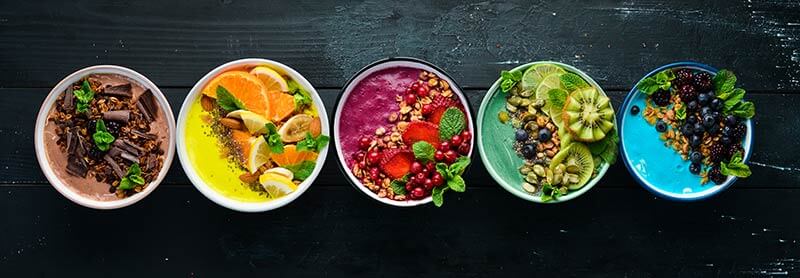
If you’re looking to drop a dress size or two, listening to your inner hunger cues can help you discover when you’re actually hungry and when you’re feeling full. These can help you kick snacking to the curb for good.
Some external nudges could potentially increase or decrease your appetite. One of which is color. Scientists have discovered that color affects our immediate response as we decide if food looks appealing or not. The sight of food alone can trigger a number of reactions in the body, and not just those rumbles in your stomach!
Neurons in a part of your brain called the hypothalamus – which regulates your appetite – start to take notice. And it doesn’t end there. Simply seeing food in front of us can cause glands in the mouth to produce increased saliva as you prepare to eat.
Let’s take a look at how different colors affect your appetite.
Red
Studies have shown that when presented with food on a red plate, people were inclined to eat less. Perhaps, this is due to the link we make between the color red and danger signs, warnings or stopping (such as stop signs). Although, some studies suggest that red results in quite the opposite – stimulating appetite, rather than suppressing it.
Overall, people find red-colored foods to be the most appealing. Still not sure? Some of the world’s most recognised food chains use red in their logos, such as McDonald’s, Burger King, Wendy’s, Pizza Hut and KFC.
Green
Regardless of what a specific food actually is, or its nutritional value, we tend to think that all green foods are healthy. This could be due to our association with certain foods, healthy smoothies and the many times we are encouraged to ‘eat our greens’ during childhood. This association may be traced back to our ancestors’ eating habits, even. Typically, green foods were viewed as safe, free of poison and unlikely to be harmful.
Yellow
In color psychology, yellow is associated with happiness. In this instance, yellow has been found to stimulate the appetite. When our eyes see yellow, our brain secretes more serotonin, a feel-good hormone. The next time you go to a restaurant, keep an eye out for yellow flowers nearby! When we see yellow we feel optimistic, and in a restaurant setting we’re more likely to splurge on a big meal.
Of similar tones, orange foods also elicit feelings of warmth and comfort.
White
Although white (often called ‘beige’!) foods may not be the brightest colored, they are often associated with excessive eating – Yep, we’re talking snacks. Although white food may feel harmless, they typically contain more calories than you think, leading to mindless eating. White foods and foods eaten on white dinnerware also tend to be less satisfying. Put those potato chips down!
Colors that suppress appetite
Since we’ve covered the colored foods that may trigger those taste buds, it’s now worth mentioning which color is considered to be an appetite suppressant.
Research suggests (and we’re with them on this one!) that the color blue suppresses your appetite. This is because other than blueberries, gooseberries, eggplants and the odd blue-purple potato, blue is unnatural to us.
Way back when, our ancestors avoided foods that were blue, black and purple as they triggered a sign that they may be poisonous. The chances are, these associations with these colors have stayed with us. Whether you put a blue light in your refrigerator or dye your food blue, your eyes are not naturally drawn to blue foods.
But what other colors suppress appetite? Studies suggest that much like the color blue, pink also doesn’t stimulate your appetite. Somewhat unnatural, the color pink is often linked to raw meat or artificial preservatives.
Gray is another color we naturally find unappetizing. It might be the ‘in’ color for furniture, but for food? No thank you. Think about it! When was the last time you saw a gray-colored food and thought “Mmmm tasty!”. The same can be said for brown foods, which can quickly suppress your appetite and eagerness to get stuck in – as it is associated with burnt food.
Fed up of dying your food blue?
While color psychology and food is pretty interesting, if you’re fed up of staring at blue snacks, why not give PhenGold a try?
Our carefully selected ingredients have been specially chosen to help increase your metabolism and suppress your hunger – kicking the urge to snack to the curb!


